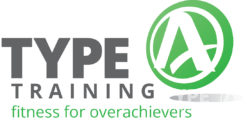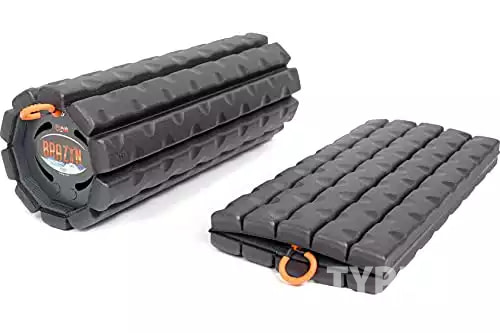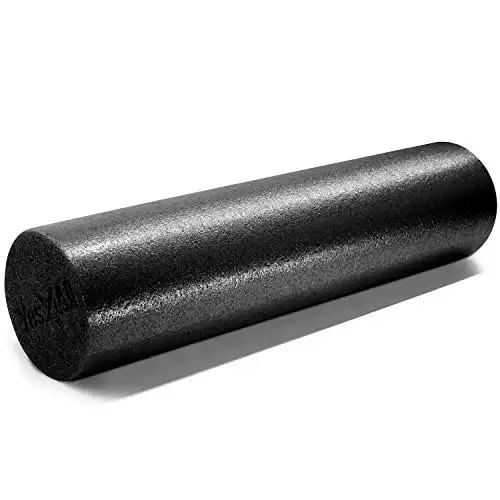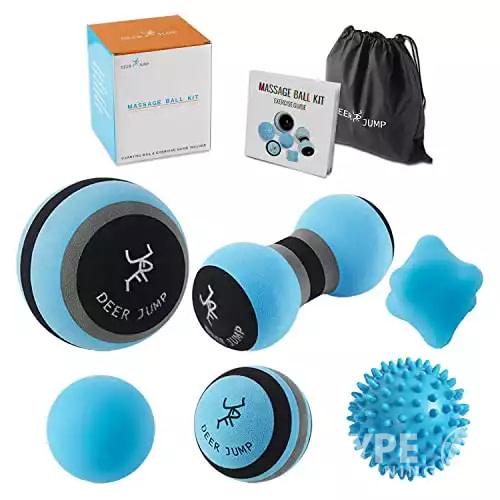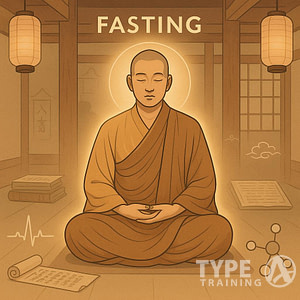If you’re serious about running, you probably have a training plan in place. But have you considered a recovery plan? Recovery, especially post-race recovery, is just as important as training, but it’s often overlooked. Between work, family, social life, and training, it’s easy to forget about recovery. However, proper post-race recovery can help you feel better and reach your running goals faster. Prioritizing post-race recovery allows you to enhance your performance in future races.
To help you get started, we’ve compiled 11 science-backed tips to help you recover faster between runs. From easy days to foam rolling to getting enough sleep, these tips will help you make recovery a priority and get the most out of your training.
Incorporating effective post-race recovery strategies can significantly enhance your overall performance and readiness for future races. The benefits of post-race recovery cannot be underestimated.
The Importance of Post-Run Recovery
Popular posts:
As a runner, taking the time to properly recover after a run is crucial to maintaining a consistent training schedule and avoiding overuse injuries. Running too soon or too often without proper post-race recovery can lead to increased inflammation, delayed onset muscle soreness (DOMS), and fatigue, among other symptoms.
Prioritizing post-race recovery is essential for every runner. Neglecting it can lead to longer recovery times and increased risk of injury.
According to a 2009 study, up to 70% of long-distance runners experience an overuse injury in a year, with nearly half of these injuries involving the knee. Common injuries include patellofemoral pain syndrome (PFPS), iliotibial band syndrome (ITBS), meniscus injuries, and patellar tendinitis. Other common injuries below the knee include shin splints (medial tibial stress syndrome), plantar fasciitis, and Achilles tendinitis.
Fortunately, evidence-based recovery techniques can help reduce fatigue and soreness and prevent overuse injuries. Here are some tips to help you optimize your post-run recovery:
Implementing a dedicated post-race recovery routine can vastly improve your running efficiency.
- Set a bedtime and stick to it, allowing your body enough time to rest and recover.
- Eat within the first 30 minutes after your run to jump-start the recovery process.
- Hydrate before, during, and after your run to prevent dehydration and aid recovery.
- Stretch before and after your run to improve flexibility and reduce the risk of injury.
- Use foam rollers or massage tools to reduce muscle soreness and improve circulation.
- Try cross-training to improve overall fitness and reduce the risk of injury.
- Build recovery into your training schedule, including rest days and easy runs.
- Listen to your body and adjust your training schedule as needed to prevent overuse injuries.
By prioritizing post-run recovery and incorporating effective strategies for post-race recovery, you can reduce the risk of injury and improve your overall running performance.
By prioritizing post-race recovery and incorporating effective strategies for post-race recovery, you can reduce the risk of injury and improve your overall running performance. Remember, post-race recovery is essential for every runner.
Related
How Recovery Works
After running or exercising, your body undergoes muscle damage and depletes glycogen stores which lead to inflammation. To combat this, focusing on proper post-race recovery techniques is vital. Recovery is when your body repairs and adapts to the stress of exercise. The goal of post-race recovery is to reduce fatigue and prevent painful muscles and inflammation, which can help you stay injury-free and ready to take on your next workout.
Post-race recovery involves several key techniques to ensure your body can recuperate effectively.
Recovery time can vary depending on the intensity and duration of the exercise. Delayed onset muscle soreness (DOMS) is a common symptom of muscle damage that can occur 24 to 72 hours after exercise. DOMS can be reduced by proper recovery techniques.
Muscle protein synthesis is the process by which your body repairs and rebuilds muscle fibers. Consuming protein after exercise can help give your body the raw material it needs to repair muscle fibers. Water supports every metabolic function and nutrient transfer in the body, and having plenty of water will improve every bodily function. You should aim to get 8 hours of sleep, as sleep deprivation can have a significant negative effect on performance and recovery.
Overtraining can lead to fatigue, injury, and decreased performance. It is essential to listen to your body and give it adequate rest and recovery time. A popular table of recovery techniques is shown below:
| Recovery Technique | Description |
|---|---|
| Active Recovery | Low-intensity exercise that promotes blood flow and reduces muscle soreness |
| Foam Rolling | A self-massage technique that can help reduce muscle soreness and improve mobility |
| Stretching | Helps to improve flexibility and reduce muscle soreness |
| Compression | Applying pressure to muscles can help reduce inflammation and soreness |
| Hydration | Drinking water helps to flush out toxins and reduce inflammation |
| Sleep | Getting enough sleep is essential for muscle recovery and growth |
By incorporating these recovery techniques into your routine, you can reduce muscle soreness, inflammation, and fatigue, and improve your overall performance.
Implementing a structured post-race recovery plan can help you achieve your fitness goals faster and with less discomfort. A comprehensive post-race recovery strategy is essential for optimal training.
Try This Four-Phase Post-Race Recovery Approach After a Race or Hard Run
After a race or hard run, it is important to focus on recovery to help your body heal and prevent injury. Here are three phases of post-race recovery you can follow to recover faster:
- Immediate Recovery: As soon as you finish your race or hard run, it’s important to start the recovery process. Take a few basic steps to help your body recover, such as walking around, drinking water, and stretching. This will help flush out lactic acid from your muscles and reduce stiffness and fatigue the following day.
- Active Recovery: The next phase is active recovery. This involves low-intensity activities such as walking, cycling, or swimming. Active recovery helps increase blood flow to your muscles, which can help reduce soreness and speed up the healing process.
- Rest and Rebuild: The final phase is rest and rebuild. This phase involves taking a break from intense exercise and allowing your body to recover fully. During this phase, it’s important to get enough sleep, eat a healthy diet, and stay hydrated. This will help your body rebuild and repair damaged muscles, so you can come back stronger for your next race or hard run.
By following this three-phase approach, you can recover faster and reduce your risk of injury. Remember to listen to your body and adjust your post-race recovery plan as needed. With patience and persistence, you can bounce back from a hard run or race and continue to improve your performance through effective post-race recovery.
After an intense workout or race, focus on your post-race recovery to maintain a healthy training cycle and to enhance your next performance.
Phase One: Right After Completing Your Run
As soon as you finish your run, your body enters recovery mode. It’s important to take the necessary steps to help your body recover as quickly and effectively as possible. Here are some tips to help you recover after your run:
- Wrap yourself in a foil blanket or other covering to avoid feeling cold and clammy. Change into warm, soft clothes, including footwear, as soon as possible to keep your feet from swelling and give them much-needed support.
- Start rehydrating your body as soon as possible. Ideally, you should drink 16–20 ounces of fluid for every pound you lost during your run. Weigh yourself to help plan your fluid intake.
- Find a comfortable place to lie down and put your feet up. This will help your body recover after several hours of hard work and is also relaxing. Try keeping your feet elevated for 15–25 minutes. Repeat this several more times during the day.
- Consume a recovery meal containing protein, preferably in liquid form, within the first 30 minutes after your run. Avoid processed fruit juices or other sugary substitutes. Use what has worked in training, but make sure you have something easy on your stomach and that you enjoy.
- Check yourself. Did you experience an injury, like a blister or muscle strain, it is important to evaluate the severity of the damage and seek assistance promptly.
By following these tips, you can help your body recover faster after your run and be ready for your next training session or race.
Adopting adequate post-race recovery methods will help you recover quicker and prevent injuries, ensuring that your post-race recovery is as effective as possible.
Phase Two: 12-24 Hours After the Race Has Ended
(Image credit: sunnyhealthfitness)
Now, it’s time to focus on recovery. The next 12-24 hours are crucial for your body to recover faster and get back to running. Here are some tips to help you recover effectively:
- Take a shower or bath to rejuvenate your body and help identify any issues. This will also help you relax and reduce stress.
- If possible, consider a cool or cold bath to help promote recovery. You also can add some light, static stretching that should be easy and comfortable on your muscles, and they should feel better when done.
- Focus on a proper meal. As you choose your foods, try to keep them reasonably healthy, and drink lots of water. You need to replenish your body with the nutrients and fluids that it lost during the race.
- You’ve earned the right to celebrate, but don’t overdo it. Your body is still recovering. Limit the amount of alcohol you consume and how long you stand on your feet.
- Get some well-deserved sleep. You’ll likely be so tired that falling asleep won’t be an issue. The problem is you’ll probably be so sore that staying asleep could be harder than you think. Put plenty of fluids — and maybe even a snack — on your bedside table, and keep your feet elevated.
Remember, the key to faster recovery is to take care of your body. By following these tips, you can recover faster and get back to running in no time.
The post-race recovery phase is the most crucial time to listen to your body’s needs.
During this phase, you should continue to focus on post-race recovery, but also start thinking about your next steps towards optimal recovery.
During this phase, you should continue to focus on recovery, but also start thinking about your next steps.
Here are some tips to help you recover faster:
- Stay active: Do your best to avoid being stationary, other than sleeping. Light walking, an easy dip in the pool, or a short spin on an exercise bike will help your muscles flush out toxins and aftereffects of the race. Frequent rest will be needed, but total rest is your enemy here.
- Eat healthy: Continue to eat healthy. Focus on proteins and quality carbohydrates, such as fruits and vegetables, especially when your body is vulnerable. A treat or two is all right, but try to save the serious snack attacks until you can savor the food.
- Lightly work on your muscles: Lightly working on your calves, feet, hamstrings, glutes and quads is another great way to stay loose and promote recovery. Whether you use your hands or a tool, taking the time to focus on your trouble areas will be beneficial. Keep it light; it should feel good, not hurt. Going too deep or hard with this work can make you sorer.
Phase Four: 3-5 days Transitioning From Gentle Physical Activity to Regular Exercise Training
With this last phase of recovery, you should include gentle exercises like low-impact cardio, dynamic stretching, foam rolling, light strength training, and daily stretching to ease back into regular training intensity/duration levels once muscle soreness is minimal.
Here are some more details on activities that could be included in Phase 4 of post recovery:
- Low-impact cardio like swimming, biking, or elliptical work to get blood flowing without high-impact stress on muscles and joints. Duration and intensity should be low.
- Dynamic stretching and mobility exercises to regain muscle flexibility without straining. Examples include leg swings, butt kicks, high knees while walking.
- Yes, keep foam rolling and self-massage to reduce muscle soreness and improve blood flow to damaged tissues. Focus on major muscle groups used in the race.
- Light strength training to re-engage muscles without fatigue, like bodyweight squats, pushups. Avoid heavy lifting.
- Stretching daily to improve flexibility and range of motion as soreness subsides.
The goal is to ease back into regular training intensity/duration levels once muscle soreness is minimal.
Engaging in proper post-race recovery techniques will enhance both your recovery and performance.
Remember, recovery is just as important as the race itself. By following these tips, you’ll be on your way to a faster, smoother recovery.
Your post-race recovery routine can set the tone for your future training sessions.
10 Proven Ways to Recover Faster
Understanding various aspects of post-race recovery can enhance your performance in subsequent races.
1. Make Easy Days Easy
One of the most important things you can do to recover faster is to make sure your easy days are truly easy. This means taking it easy on your body and allowing it to rest and recover properly.
Here are some tips to make your easy days truly easy:
- Lower the intensity: On your easy days, lower the intensity of your workout. This will give your muscles a chance to recover and rebuild.
- Shorten the duration: If you typically run for an hour, shorten your easy day to 30 minutes. This will still give you a chance to move your body, but it won’t be as taxing on your muscles.
- Incorporate active recovery: Active recovery is a great way to help your body recover without being completely sedentary. Try going for a walk, doing some yoga, or taking a swim on your easy days.
- Listen to your body: If you’re feeling sore or fatigued, don’t push yourself too hard on your easy days. It’s important to give your body the rest it needs to recover properly.
By making sure your easy days are truly easy, you’ll give your body the time it needs to recover and rebuild. This will ultimately help you recover faster and perform better in the long run.
2. Rehydrate After Workouts
Rehydrating your body after a workout is crucial for faster recovery. When you exercise, your body loses fluids through sweat, and it needs to be replenished. Here are some tips to help you rehydrate effectively:
- Drink plenty of water: Water is the best way to rehydrate after a workout. It contains no added sugars or calories, and it helps to replace the fluids lost during exercise.
- Consider sports drinks: If you exercise for more than an hour, sports drinks can help to replenish the electrolytes lost during exercise. However, be mindful of the added sugars and calories in sports drinks, and choose low-sugar options.
- Eat water-rich foods: Foods such as watermelon, cucumber, and oranges are high in water content and can help to rehydrate your body.
- Avoid alcohol: Alcohol can dehydrate your body, so it’s best to avoid it after a workout.
- Monitor your urine color: Your urine color is a good indicator of your hydration levels. If your urine is light yellow or clear, you are adequately hydrated. If it’s dark yellow or amber, you need to drink more water.
- Rehydrate before, during, and after exercise: To prevent dehydration, it’s important to drink water before, during, and after exercise.
- Use a hydration calculator: If you’re not sure how much water you need to drink to rehydrate after a workout, use a hydration calculator to determine your fluid needs.
By following these tips, you can ensure that you are properly rehydrating your body after a workout, which can help to speed up your recovery time.
Related:
3. Replenish Glycogen Stores
After a workout, your glycogen stores will be depleted. It is important to replenish these stores to ensure that your body has enough energy for your next workout. Here are some ways to replenish glycogen stores:
To ensure effective post-race recovery, focus on hydration and nutrition immediately after the race.
- Eat foods high in carbohydrates such as rice, potatoes, and pasta. These foods are great for replenishing glycogen stores because they are high in complex carbohydrates.
- Consume foods that contain simple sugars such as fruits and honey. These foods are great for a quick energy boost and can help replenish glycogen stores.
- Drink sports drinks that contain electrolytes. These drinks can help replenish glycogen stores and also help with hydration.
- Consume protein-rich foods such as chicken, fish, and beans. Protein is essential for muscle recovery and can also help with glycogen synthesis.
- Eat foods that are high in fiber such as vegetables and whole grains. These foods can help slow down the digestion of carbohydrates, which can help maintain stable blood sugar levels and prevent energy crashes.
- Consume foods that are high in antioxidants such as berries, nuts, and seeds. Antioxidants can help reduce inflammation and promote muscle recovery.
- Drink plenty of water to stay hydrated. Dehydration can lead to a decrease in glycogen synthesis.
- Avoid consuming alcohol after a workout as it can disrupt your post-race recovery process. Proper hydration and nutrition during the post-race recovery phase are crucial.
- Consume a post-workout supplement that contains a combination of carbohydrates and protein. These supplements are specifically designed to help with glycogen synthesis and muscle recovery.
By following these tips, you can replenish your glycogen stores and recover faster after a workout. Remember to listen to your body and adjust your diet and exercise routine accordingly.
Be vigilant about your post-race recovery as it plays a vital role in your overall training strategy.
4. Eat Protein
Protein is an essential nutrient that helps repair and rebuild muscles after exercise. Consuming enough protein is crucial for muscle recovery and growth. Here are some proven ways to ensure you are getting enough protein:
- Include a source of protein in every meal and snack. Good sources of protein include lean meats, poultry, fish, eggs, dairy, beans, nuts, and seeds.
- Aim for at least 20-30 grams of protein per meal. This amount has been shown to maximize muscle protein synthesis.
- Consider using protein supplements, such as whey protein powder, if you struggle to meet your protein needs through whole foods alone.
- Consume protein within 30 minutes to an hour after exercise to help kickstart the muscle recovery process.
Remember, while protein is important for muscle recovery, it is also important to consume a balanced diet that includes plenty of fruits, vegetables, and whole grains.
Related:
5. Mix Up Your Training Routine
To recover faster, it’s important to mix up your training routine. Doing the same exercise routine day after day can lead to overuse injuries and burnout. By changing up your routine, you can target different muscle groups and prevent boredom.
Utilizing different recovery methods can significantly optimize your post-race recovery process.
Here are some ways to mix up your training routine:
- Cross-training: Incorporate different types of exercises, such as swimming, cycling, or yoga, to target different muscle groups and prevent overuse injuries.
- Interval training: Alternate between high-intensity and low-intensity exercises to improve cardiovascular fitness and burn more calories.
- Strength training: Add weightlifting or resistance training to your routine to build muscle and improve overall fitness.
- Outdoor activities: Take your workout outside and try hiking, running, or kayaking to challenge your body in new ways.
- Group fitness classes: Join a fitness class, such as Zumba or kickboxing, to meet new people and keep your workouts fun and engaging.
Mixing up your training routine not only helps you recover faster but also keeps your workouts interesting and challenging. By incorporating different types of exercises, you can target different muscle groups and prevent overuse injuries.
6. Roll or Massage Sore Muscles
Rolling or massaging sore muscles can help to speed up the recovery process. This is because it helps to increase blood flow to the affected area, which in turn helps to reduce inflammation and promote healing.
There are several ways to roll or massage sore muscles. One option is to use a foam roller, which is a cylindrical piece of foam that you can use to roll over your muscles. Another option is to use a massage ball or a handheld massager. These tools can be used to target specific areas of the body, such as the back, neck, or shoulders.
Remember, every runner’s post-race recovery plan should be personalized based on individual needs and experiences.
When rolling or massaging sore muscles, it’s important to use gentle pressure and to avoid putting too much pressure on the affected area. It’s also important to listen to your body and to stop if you experience any pain or discomfort.
Overall, rolling or massaging sore muscles can be an effective way to speed up the recovery process and reduce discomfort. It’s a simple and affordable option that you can do at home, making it a convenient choice for many people.
Foam Rollers
Massage Balls
|
Primary Rating:
3.5
|
Primary Rating:
3.5
|
Primary Rating:
3.5
|
|
|
N/A
|
|
7. Recovery Stretch
Stretching is an essential part of any exercise routine, and it can also help you recover faster between runs. Stretching helps to increase flexibility, improve range of motion, and reduce the risk of injury. Here are some tips to help you stretch effectively:
- Stretch after your workout when your muscles are warm and pliable.
- Hold each stretch for at least 15-30 seconds, and repeat each stretch two to three times.
- Focus on major muscle groups, such as your hamstrings, quadriceps, calves, and hips.
- Use dynamic stretching before your workout and static stretching after your workout.
- Avoid bouncing or jerking movements while stretching, as this can cause injury.
- Incorporate foam rolling into your stretching routine to help release tension and improve circulation.
- Consider taking a yoga or Pilates class to improve flexibility and core strength.
Remember to listen to your body and not push yourself too hard. Stretching should feel good and help you relax, not cause pain or discomfort. By incorporating stretching into your recovery routine, you can improve your performance and reduce your risk of injury.
Related:
8. Get Enough Quality Sleep
Incorporating sleep as part of your post-race recovery is crucial for optimal performance.
Incorporating sleep as part of your post-race recovery is crucial for optimal performance and to enhance your post-race recovery strategy.
Sleep is a crucial part of the recovery process, and getting enough quality sleep can help you recover faster between runs. The recommended amount of sleep for a healthy adult is at least seven hours per night. Here are some tips to help you get better sleep:
- Stick to a sleep schedule: Set aside no more than eight hours for sleep and go to bed and get up at the same time every day, including weekends. Being consistent reinforces your body’s sleep-wake cycle.
- Create a relaxing bedtime routine: Take a warm bath, read a
book , or listen to calming music before bed to help you relax and unwind. - Make your bedroom conducive to sleep: Keep your bedroom cool, dark, and quiet. Use blackout curtains, earplugs, or a white noise machine if necessary.
- Avoid caffeine, alcohol, and nicotine: These substances can interfere with your sleep and make it harder to fall asleep or stay asleep.
- Exercise regularly: Regular exercise can help you fall asleep faster and sleep more soundly. Just make sure to avoid exercising too close to bedtime, as it can interfere with your sleep.
- Limit daytime naps: If you need to take a nap, limit it to 20-30 minutes and avoid napping late in the day.
- Manage stress: Stress and anxiety can interfere with your sleep. Try relaxation techniques such as deep breathing, meditation, or yoga to help you manage stress.
- Get comfortable: Invest in a comfortable mattress and pillows that support your body. If you share your bed, make sure it’s big enough to allow for comfortable sleeping.
Related:
- Sleeping, Recovery, Working Out: Essential Trio for Optimal Fitness
- Discover the Benefits of Yoga for Improved Sleep
9. Take Ice baths or Epsom salt baths
One of the proven ways to recover faster between runs is to take ice baths or Epsom salt baths. Effective post-race recovery through water immersion has been shown to reduce fatigue and speed up recovery in elite athletes.
In conclusion, effective post-race recovery methods are essential for every athlete aiming to improve their performance.
Both ice baths and Epsom salt baths have their benefits and drawbacks. Ice baths are effective in reducing inflammation and muscle soreness, but they can be uncomfortable and even painful. Epsom salt baths, on the other hand, are more relaxing and can help with muscle relaxation and pain relief. However, they may not be as effective in reducing inflammation as ice baths.
It is important to note that ice baths and Epsom salt baths are not suitable for everyone. People with heart conditions, high
Related:
10. Consider Using Supplements
Supplements can help aid in recovery and muscle repair. Tart cherry juice has been shown to reduce muscle soreness and inflammation. Runners and endurance athletes in particular may benefit from tart cherry supplementation after long or intense training sessions. Consuming tart cherry juice regularly has been found to decrease exercise-induced inflammation and muscle damage. This allows runners to recover faster and get back to intense training sooner, without the risk of overtraining or injury from prolonged inflammation.
Ultimately, understanding the significance of post-race recovery will empower you to maximize your training efforts.
Understanding effective post-race recovery techniques is essential for sustaining your running regimen.
Ultimately, understanding the significance of post-race recovery will empower you to maximize your training efforts and improve your overall performance.
5 reasons for runners to consider supplements for post-exercise recovery:
5 reasons for runners to consider supplements for post-exercise recovery: The focus on post-race recovery methods can significantly enhance your training.
- Tart cherry juice can reduce muscle soreness and inflammation caused by running/training.
- Protein supplements help rebuild damaged muscle fibers to support strength and performance gains.
- Supplements replenish electrolytes and nutrients lost through sweat during long runs.
- Anti-inflammatory supplements like turmeric expedite recovery by reducing exercise-induced muscle damage.
11. Be Mindful of How You Spend the Rest of Your Day
In addition to the recovery methods discussed earlier, it is important to be mindful of how you spend the rest of your day to optimize post-race recovery. Here are some tips to help you be more mindful:
In addition to the recovery methods discussed earlier, it is important to be mindful of how you spend the rest of your day to optimize recovery. Here are some tips to help you be more mindful:
- Take breaks throughout the day: Sitting for long periods of time can be detrimental to your recovery. Taking short breaks to stand up, stretch, or walk around can improve circulation and help prevent muscle stiffness.
- Practice good posture: Poor posture can lead to muscle imbalances and tension. Be mindful of your posture throughout the day, especially if you have a desk job.
- Manage stress: Stress can negatively impact recovery. Engage in stress-reducing activities such as meditation, yoga, or deep breathing exercises.
- Stay hydrated: Dehydration can lead to muscle cramps and fatigue. Be sure to drink plenty of water throughout the day.
- Avoid alcohol and tobacco: These substances can impair recovery and are detrimental to overall health.
- Get enough rest: Adequate sleep is crucial for recovery. Aim for 7-9 hours of sleep per night.
- Eat a balanced diet: Proper nutrition is essential for recovery. Be sure to consume a diet rich in protein, healthy fats, and complex carbohydrates.
- Listen to your body: Pay attention to how your body feels throughout the day. If you feel fatigued or sore, take a break or adjust your activity level accordingly.
- Engage in low-impact activities: High-impact activities can be hard on the body and may impede recovery. Consider low-impact activities such as swimming, cycling, or yoga.
By being mindful of how you spend the rest of your day, you can optimize your recovery and improve your overall health and well-being.
By being mindful of how you spend the rest of your day, you can optimize your post-race recovery and improve your overall health and well-being.
Related:
- Your Ultimate Guide to the Benefits of Virtual Yoga and Meditation
- The Benefits of Online Yoga and Meditation for Mental Health
Frequently Asked Questions
How can You Speed Up Muscle Recovery after Exercise?
Muscle recovery after exercise is crucial for optimal performance and injury prevention. To speed up muscle recovery, you can try the following:
- Rest and sleep: Give your body enough time to rest and recover after exercise. Aim for at least 7-8 hours of sleep each night.
- Hydrate: Drink plenty of water before, during, and after exercise to help flush out toxins and prevent dehydration.
- Stretching and foam rolling: Stretching and foam rolling can help improve blood flow and reduce muscle soreness.
- Massage: Regular massages can help reduce muscle tension and improve circulation, leading to faster recovery.
What are Some Effective Post-Workout Recovery Supplements?
There are several supplements that can help with post-workout recovery, including:
- Protein: Protein is essential for muscle repair and growth. Consider taking a protein supplement or eating protein-rich foods such as eggs, chicken, or fish after exercise.
- BCAAs: Branched-chain amino acids (BCAAs) can help reduce muscle soreness and improve recovery. You can find BCAA supplements in powder or capsule form.
- Creatine: Creatine can help increase muscle strength and improve recovery time. It is available in powder or capsule form.
What are Some Foods that Aid in Muscle Recovery?
Eating a balanced diet that includes plenty of protein, carbohydrates, and healthy fats is essential for muscle recovery. Some foods that can aid in muscle recovery include:
- Salmon: Salmon is rich in omega-3 fatty acids, which can help reduce inflammation and improve muscle recovery.
- Sweet potatoes: Sweet potatoes are a great source of carbohydrates, which can help replenish glycogen stores and improve recovery.
- Spinach: Spinach is rich in antioxidants and vitamins that can help reduce inflammation and improve recovery.
Are There Any Drinks that Can Help with Muscle Recovery?
Yes, there are several drinks that can help with muscle recovery, including:
- Water: Staying hydrated is essential for muscle recovery. Drink plenty of water before, during, and after exercise.
- Chocolate milk: Chocolate milk is a great post-workout drink as it contains protein, carbohydrates, and electrolytes that can help with recovery.
- Tart cherry juice: Tart cherry juice is rich in antioxidants and can help reduce inflammation and improve recovery.
Is it Possible to Train Your Body to Recover Faster?
Yes, it is possible to train your body to recover faster. By gradually increasing the intensity and duration of your workouts, you can improve your body’s ability to recover. Additionally, incorporating recovery techniques such as stretching, foam rolling, and massage can also help improve recovery time.
What are Some Muscle Recovery Tips for Athletes over 40?
Incorporating all these tips will lead to successful post-race recovery and improved athletic performance.
As we age, our bodies take longer to recover from exercise. Here are some muscle recovery tips for athletes over 40:
Post-race recovery is the key to maintaining a healthy and productive training routine. Prioritizing post-race recovery ensures that you remain injury-free and ready for your next challenge.
-
- Gradual progression: Gradually increase the intensity and duration of your workouts to avoid injury and improve recovery time.
- Incorporate rest days: Give your body enough time to rest and recover between workouts.
- Listen to your body: Pay attention to how your body feels and adjust your workouts accordingly to avoid injury and promote recovery.
Incorporating all these tips will lead to successful post-race recovery and improved athletic performance while ensuring that your training remains sustainable.
